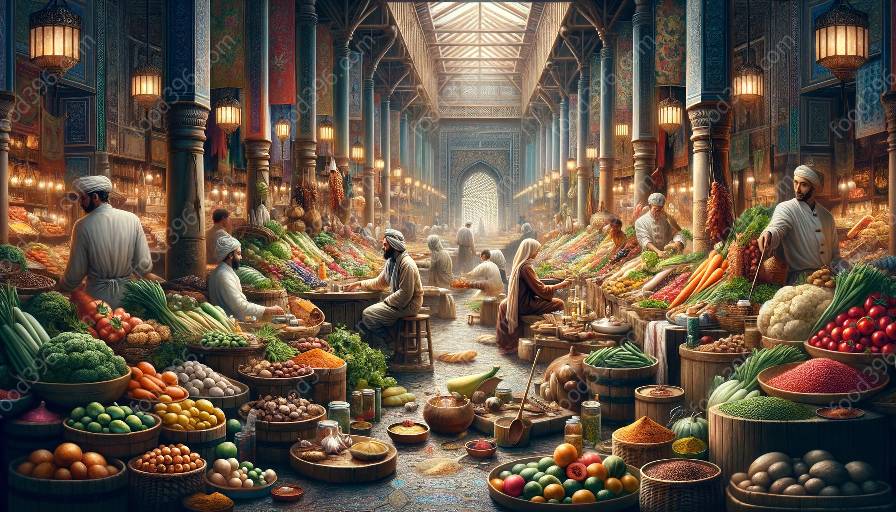Trade routes played a pivotal role in shaping early modern cuisine, influencing the flavors, ingredients, and cooking techniques that define the culinary history of this period. From the Spice Routes that connected the East and the West to the transformative impact of the Columbian Exchange, trade routes facilitated the exchange of goods, cultures, and culinary traditions, leaving an indelible mark on the evolution of food.
The Spice Routes: A Culinary Odyssey
The Spice Routes were a network of maritime trade routes that connected the East and the West, facilitating the exchange of spices, herbs, and other exotic ingredients that were highly sought after for their aromatic, medicinal, and culinary properties. The demand for spices such as pepper, cinnamon, cloves, and nutmeg drove explorers, traders, and merchants to embark on perilous voyages across the seas, leading to the establishment of extensive trade networks that spanned continents.
The impact of the Spice Routes on early modern cuisine was profound. The influx of new and exotic spices introduced a kaleidoscope of flavors and aromas to the culinary landscape, inspiring the development of elaborate spice blends and the creation of dishes that were rich in complexity and depth. These spices not only revolutionized the way food was seasoned and preserved but also sparked culinary innovation, as cooks and chefs experimented with novel ingredients to create gastronomic delights that tantalized the taste buds of the era.
The Columbian Exchange: A Fusion of Flavors
The Columbian Exchange, following the voyages of Christopher Columbus and other explorers, marked a pivotal moment in the history of culinary globalization. It facilitated the exchange of a wide array of foods, plants, and culinary practices between the Old World and the New World, leading to a transformative fusion of flavors and ingredients that forever altered the course of early modern cuisine.
Prior to the Columbian Exchange, the culinary traditions of Europe, Asia, Africa, and the Americas existed in relative isolation, with distinct ingredients and cooking techniques shaping the regional cuisines. However, the introduction of New World foods such as potatoes, tomatoes, corn, and chili peppers to the Old World and the transfer of Old World staples like wheat, grapes, and citrus fruits to the New World sparked a culinary revolution, resulting in the integration of novel ingredients into traditional recipes and the emergence of entirely new dishes that embodied the amalgamation of diverse culinary heritages.
The Global Culinary Mosaic
As trade routes continued to expand and connect distant lands, the global exchange of culinary traditions and ingredients continued to shape early modern cuisine. The arrival of coffee from the Middle East, the spread of tea from Asia, and the incorporation of sugar from the Caribbean into European confectionery all contributed to the creation of a rich and diverse culinary mosaic that reflected the interconnectedness of the world through trade.
Furthermore, the introduction of new cooking techniques, such as stir-frying from China, tandoori-style cooking from the Indian subcontinent, and the use of various spices and herbs from Africa, further enriched the culinary repertoire of early modern societies, leading to a fusion of culinary techniques and flavor profiles that transcended geographical boundaries.
Legacy and Influence
The impact of trade routes on early modern cuisine reverberates through the annals of culinary history, laying the foundation for the globalized food culture that we experience today. The intermingling of ingredients, flavors, and culinary techniques through trade routes not only expanded the palates of individuals but also engendered cultural exchange and appreciation for diverse gastronomic traditions.
From the intricate spice blends of Indian curries to the use of New World ingredients in European stews, the enduring legacy of early modern cuisine is a testament to the enduring influence of trade routes on the culinary world. The trade routes of the early modern era were not simply conduits for the exchange of goods; they were conduits for the transmission of culinary knowledge, culinary innovation, and the celebration of culinary diversity.

